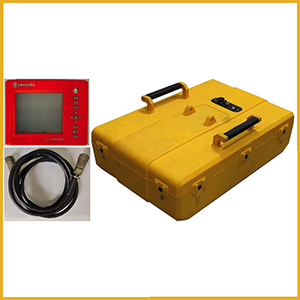Application of ground penetrating radar technology in moisture content detection of stored grain

Published: 15 September 2022
Abstract Views: 1348
PDF: 406
HTML: 34
HTML: 34
Publisher's note
All claims expressed in this article are solely those of the authors and do not necessarily represent those of their affiliated organizations, or those of the publisher, the editors and the reviewers. Any product that may be evaluated in this article or claim that may be made by its manufacturer is not guaranteed or endorsed by the publisher.
All claims expressed in this article are solely those of the authors and do not necessarily represent those of their affiliated organizations, or those of the publisher, the editors and the reviewers. Any product that may be evaluated in this article or claim that may be made by its manufacturer is not guaranteed or endorsed by the publisher.
Similar Articles
- Dhanashree Barbole, Parul M. Jadhav, Comparative analysis of 2D and 3D vineyard yield prediction system using artificial intelligence , Journal of Agricultural Engineering: Vol. 55 No. 1 (2024)
- Rita Papa, Giuseppe Manetto, Emanuele Cerruto, Sabina Failla, Mechanical distribution of beneficial arthropods in greenhouse and open field: A review , Journal of Agricultural Engineering: Vol. 49 No. 2 (2018)
- Sara Cucchiaro, Laura Carretta, Paolo Nasta, Federico Cazorzi, Roberta Masin, Nunzio Romano, Paolo Tarolli, Multi-temporal geomorphometric analysis to assess soil erosion under different tillage practices: A methodological case study , Journal of Agricultural Engineering: Vol. 53 No. 1 (2022)
- Meizhou Chen, Guangfei Xu, Xianghao Li, Hongda Zhao, Yongli Zhao, Peisong Diao, Yinping Zhang, Optimization design and experiment of double-helix total mixed rations preparation mixer for silage straw feed , Journal of Agricultural Engineering: Vol. 55 No. 2 (2024)
- Guomin Gao, Hui Guo, Jing Zhang, Zhenguo Zhang, Tianlun Wu, Hao Lu, Zhaoxin Qiu, Haiyang Chen, Zhen Lingxuan, An efficient headland-turning navigation system for a safflower picking robot , Journal of Agricultural Engineering: Vol. 54 No. 3 (2023)
- Dina Statuto, Giuseppe Cillis, Pietro Picuno, Analysis of the effects of agricultural land use change on rural environment and landscape through historical cartography and GIS tools , Journal of Agricultural Engineering: Vol. 47 No. 1 (2016)
- Mauro Podrecca, Alessandro Chiumenti, Francesco Da Borso, Marco Contin, Maria De Nobili, Reduction of odorous compounds emissions from swine slurry by electrolytic treatments and copper addition , Journal of Agricultural Engineering: Vol. 48 No. 1 (2017)
- Francesco da Borso, Alessandro Chiumenti, Marco Mezzadri, Francesco Teri, Noxious gases in rabbit housing systems: effects of cross and longitudinal ventilation , Journal of Agricultural Engineering: Vol. 47 No. 4 (2016)
- Azam Rezaei, Hassan Masoudi, Hassan Zaki Dizaji, Mohamad Esmail Khorasani Ferdavani, Modelling, analysis, and optimisation of the rear axle of cereal combine harvester under real loads using finite elements method , Journal of Agricultural Engineering: Vol. 54 No. 2 (2023)
- Roberto Romaniello, Giorgio Peri, Alessandro Leone, Fluorescence hyper-spectral imaging to detecting faecal contamination on fresh tomatoes , Journal of Agricultural Engineering: Vol. 47 No. 1 (2016)
<< < 2 3 4 5 6 7 8 9 10 11 > >>
You may also start an advanced similarity search for this article.

 https://doi.org/10.4081/jae.2022.1472
https://doi.org/10.4081/jae.2022.1472







